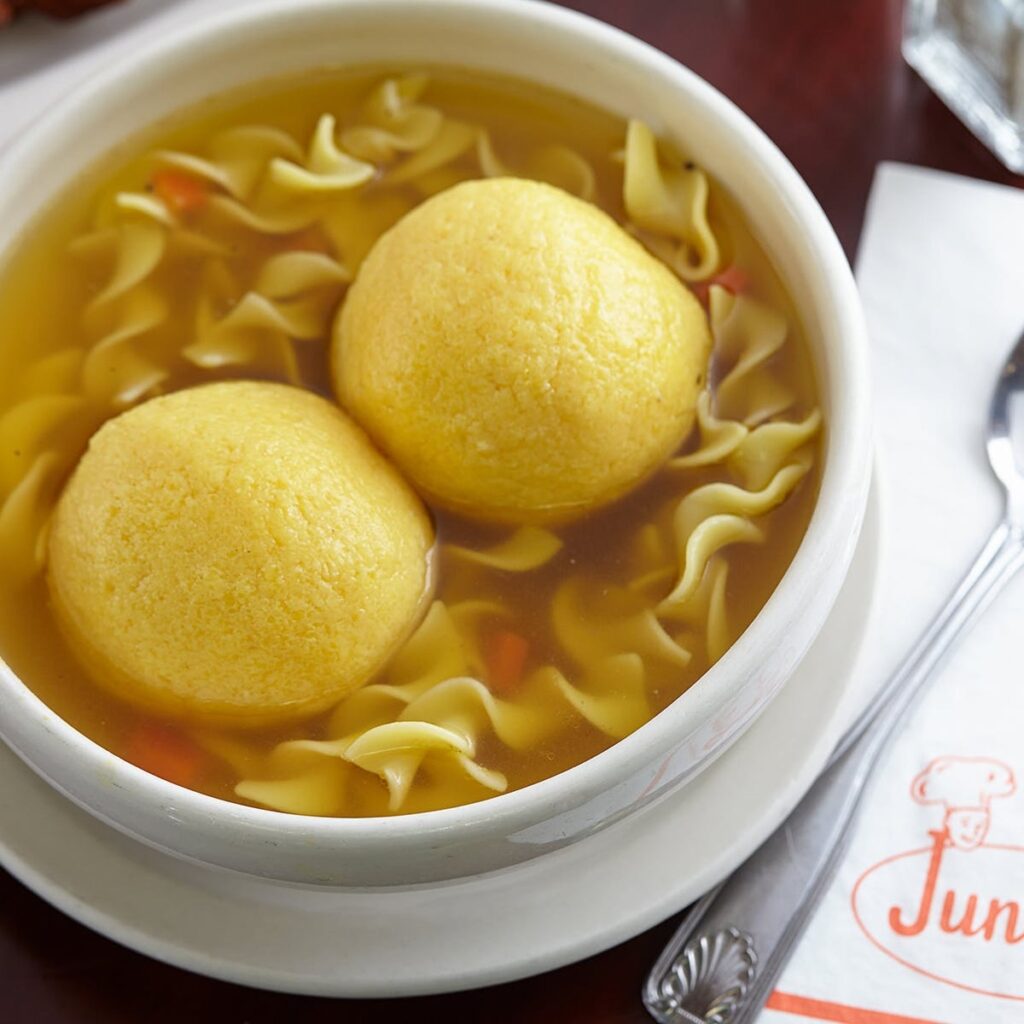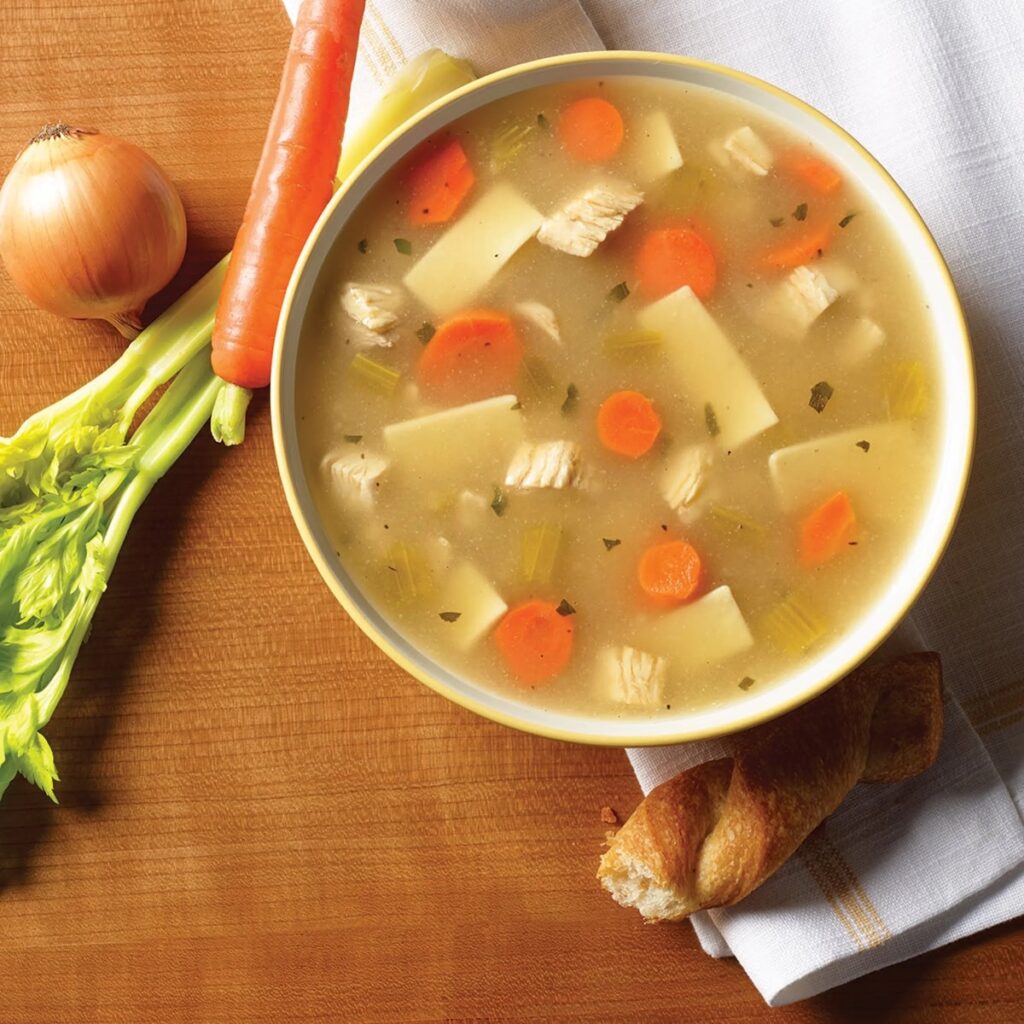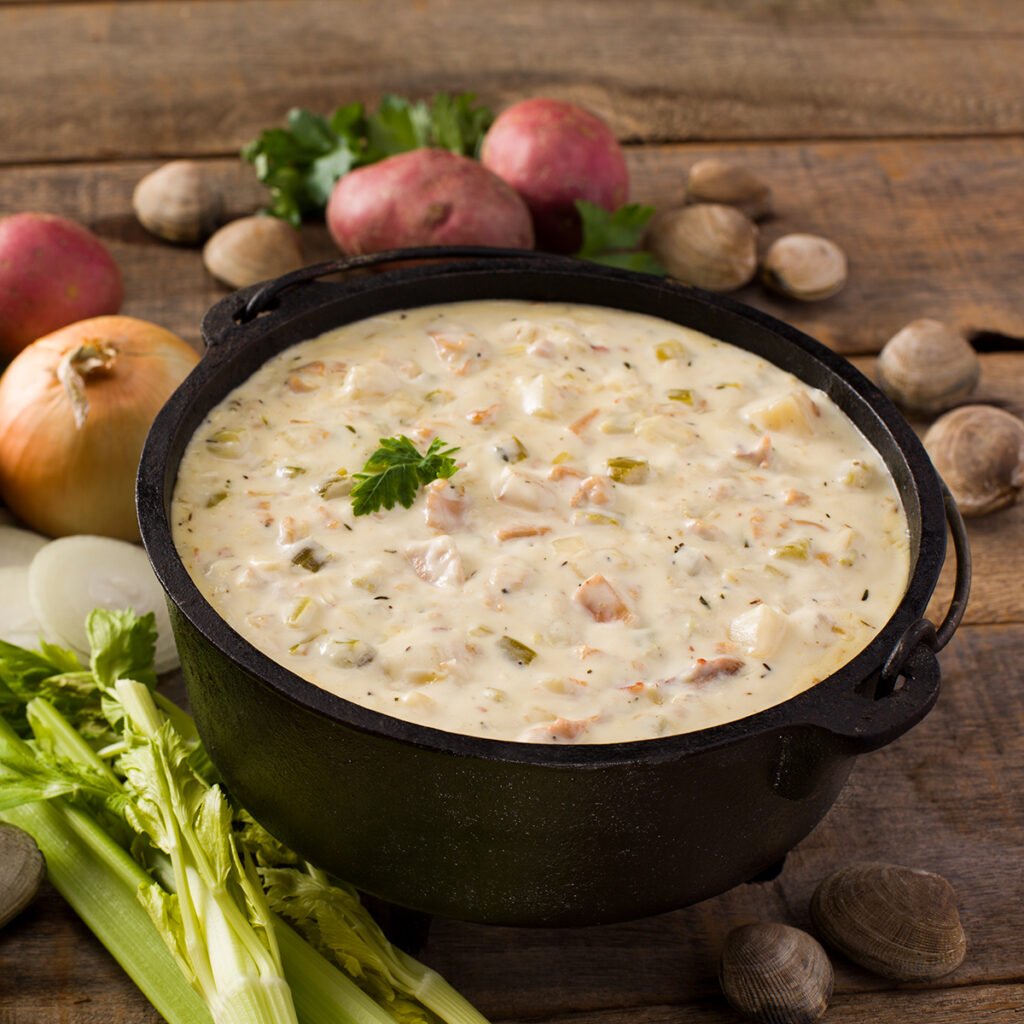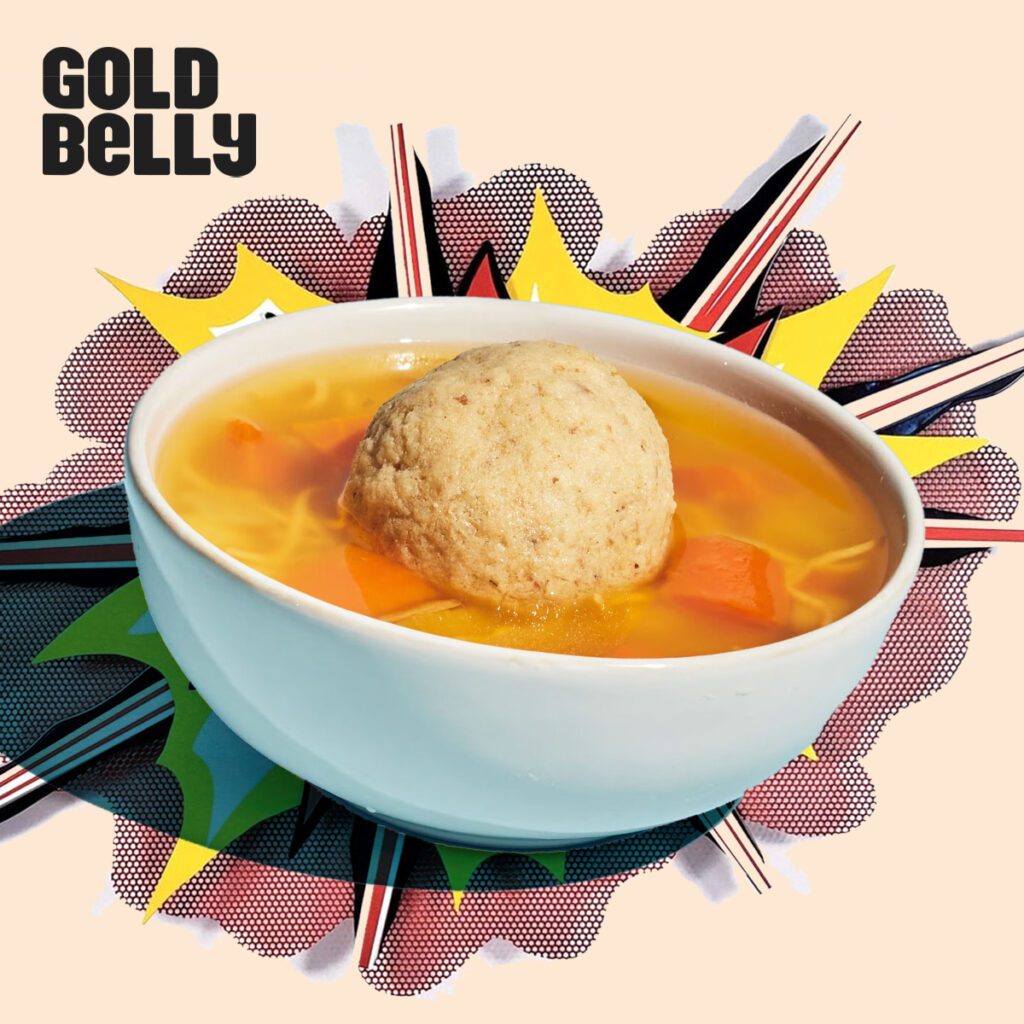In this article
GET TO KNOW THIS COMFORTING JAPANESE NOODLE SOUP
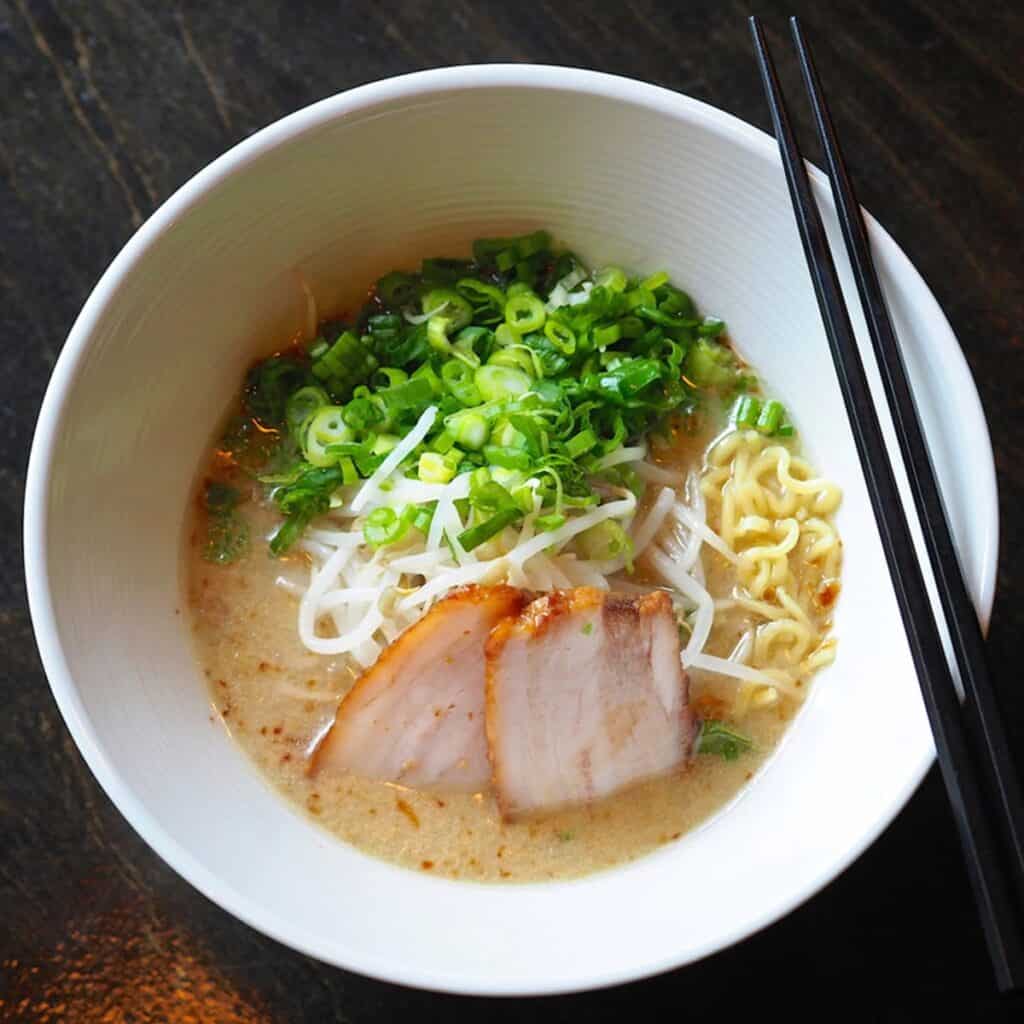
If you’ve ever slurped up a big, comforting bowl of ramen (and not those cheap instant noodles you just add water to), then you already know that it’s one of the most delicious foods on earth. And the trend is catching on: in recent years, ramen has grown in popularity worldwide, and just about every major American city has no shortage of great ramen shops.
What is Ramen?
Ramen is a Japanese noodle soup with thousands of variations. Most ramens are tonkotsu, made by boiling pork bones, pork fat, collagen, and other umami-rich ingredients like kombu (kelp), mushrooms, and katsuobushi (tuna flakes) for hours until it’s rich, creamy, and an absolute umami bomb. Other popular broths can be chicken- or vegetable-based.
So if you’re wondering, “Is ramen vegan?”, the answer is: it can be, but certainly not by default.
It’s important not to confuse traditional Japanese ramen with the cheap, instant noodles beloved by college students; this “instant ramen” (also called ramyun in Korea) comes in packets and bowls, and only require the addition of hot water for a quick meal.
What is Ramen Made Of?
Ramen can be defined as noodles, served in a bowl with broth and other add-ins including vegetables, pork, and boiled egg.
Popular Types of Ramen
Rich and creamy tonkotsu ramen is widely considered to be its own ramen style these days, and there are a handful of other ramen flavors and styles that have also become popular.
These additional varieties of ramen are primarily differentiated by tare, which is the primary seasoning or sauce that serves as a flavor base:
Shio Ramen
Shio, or “salt” ramen, is pale, yellow, and clearer than tonkotsu. It’s also lighter, usually made with chicken, vegetables, and fish; if pork bones are used, they’re not boiled for as long. As opposed to being seasoned with strongly-flavored miso or soy sauce, it’s only seasoned with salt. Because it’s only seasoned with salt, shio ramen encourages the chef to be creative.
Shōyu Ramen
Shoyu, or “soy sauce” ramen, is also lighter than tonkotsu, and is usually chicken- and vegetable-based and flavored with an ample dose of soy sauce. While it may be slicked with a thin layer of garlick-flavored fat, the broth itself remains clear and much less rich and creamy than tonkotsu.
Miso Ramen
Miso ramen is actually the newest major ramen style, emerging in Hokkaido in the 1960s. Miso ramen can be made with a clear soup base, but it’s often made by stirring an ample dose of nutty miso into tonkotsu ramen, resulting in a ramen that’s rich and hearty, a serious umami bomb that will warm you up on even the coldest day.
There are countless regional styles and spinoffs, including tsukemen, in which the noodles and concentrated soup are served in different bowls, and the noodles are dipped before being eaten.
What are Ramen Noodles Made of?
All ramen styles have one thing in common: the noodles. Ramen noodles are made with wheat flour and an alkaline mineral water called kansui, which gives them a yellowish hue and a firm, springy texture.
Almost as important as the noodles in ramen are the toppings, of which there are many varieties and are generally customizable by the customer. Popular toppings include:
- Chashu (sliced pork)
- Bean sprouts
- A boiled egg
- Green onion
- Bamboo shoots
- Wood ear mushroom
- Nori
- Corn
- Chili oil
- And a type of fish cake called naruto
How Do You Eat Ramen?
Most ramen shops have a few styles and a variety of toppings on offer, so take your pick, wait for the steamy bowl to be placed in front of you, and go to town. Use chopsticks to eat the noodles and toppings, a spoon to eat the soup, and don’t be shy. After a few spoonfuls, you’ll be amazed at how quickly the rest disappears!
Is Ramen Healthy?
With its ample dose of sodium, it’s widely understood that instant ramen isn’t exactly healthy. But is traditional Japanese ramen healthy? It definitely isn’t considered a health food. It’s high in sodium, the wheat noodles are very high in carbs, roasted pork on top can be high in fat, and if the broth is tonkotsu-style, it is usually infused with very large amounts of fat. However, the broth is also high in healthy collagen, and toppings including nori and mushrooms are generally considered healthy.
The Most Famous Ramen

Tokyo’s Menya Jiro Ramen
Tokyo’s Menya Jiro Ramen specializes in three varieties of tonkotsu ramen: rich, light, and spicy.

LA’s Killer Noodle Tsujita
LA’s Killer Noodle Tsujita, which was founded in Tokyo, sells a classic pork-based ramen as well as their renowned tan tan ramen, which is inspired by Chinese dan dan noodles and made with sesame, peanut butter, and ground pork.

New York’s Ramen Nakamura
New York’s Ramen Nakamura is famous for its light, restorative, chicken-based torigara ramen and rich tsukemen (dipping) ramen.
Read More: The Best Ramen in New York City & Beyond
If all this talk of ramen has got you hungry, then you’re in luck! Discover the most delicious ramen shipping nationwide– and happy slurping!







